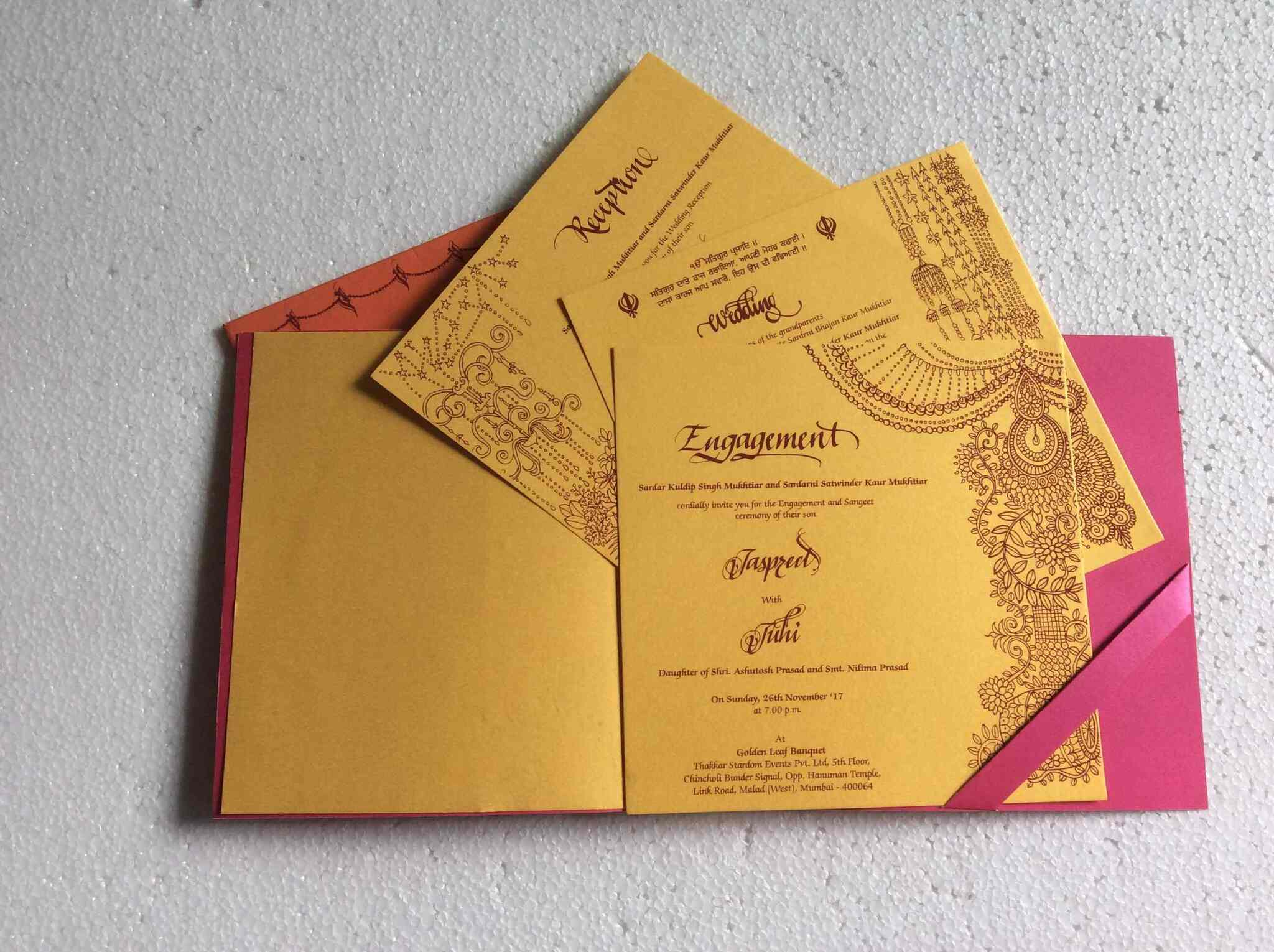
Weddings in India always tend to be a grand affair. With unmatched pomp and glamour, Indian weddings can put the wedding ceremonies of other countries to shame. From the wedding cardsto the after party, every aspect of the Indian wedding is immaculately planned. The wedding card in particular has an important role to play. It acts like the trailer of a movie. Hence, it is important that these cards reflect the overall, feel and the mood of the wedding.
Format of wedding cards
Holy texts: Holy texts are often included at the beginning of the invitation cards. The Indians believe that these holy texts will help the sacred ceremony of marriage be held without any hindrances. These holy texts maybe verses from the respective holy books or general calling of the Gods.
Hosts: The holy texts are followed by the names of the hosts. These can be the names of parents, grandparents, head of the family and even the bride and groom themselves. It basically refers to the names in which all the invitations are forwarded.
Bride and Groom: If not previously mentioned as hosts, this portion of the card usually contains the names of the bride and groom. It is made sure that their names are written in such a format that they attract attention immediately on viewing the card.
Date and Time: The date and time is the next information that is mentioned in detail on the card.
Venue: The place where the ceremony is going to take place is informed in detail after the date and time. Landmarks and address is mentioned here. There may also be a map to further avoid confusion.
RSVP: Followed by the venue information is the RSVP. There are telephone numbers that are mentioned her. The guests can call on these numbers in case of any confusion or query.
Wedding Cards are a vital component in commemoration of a wedding. The wedding cards have moved on from being just informative or a formality, to symbolising status of the marriage and being a vital component of marriages in Indian society.
No comments:
Post a Comment